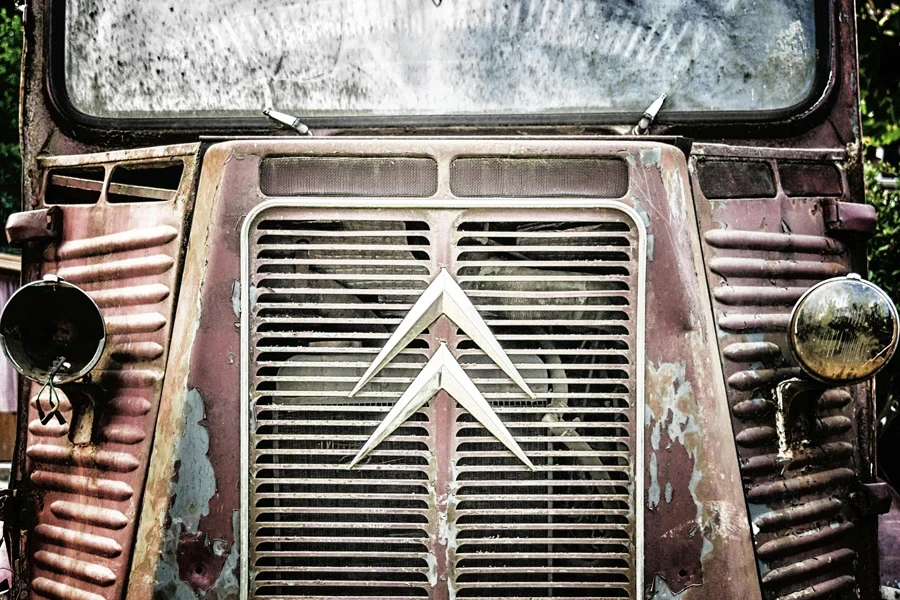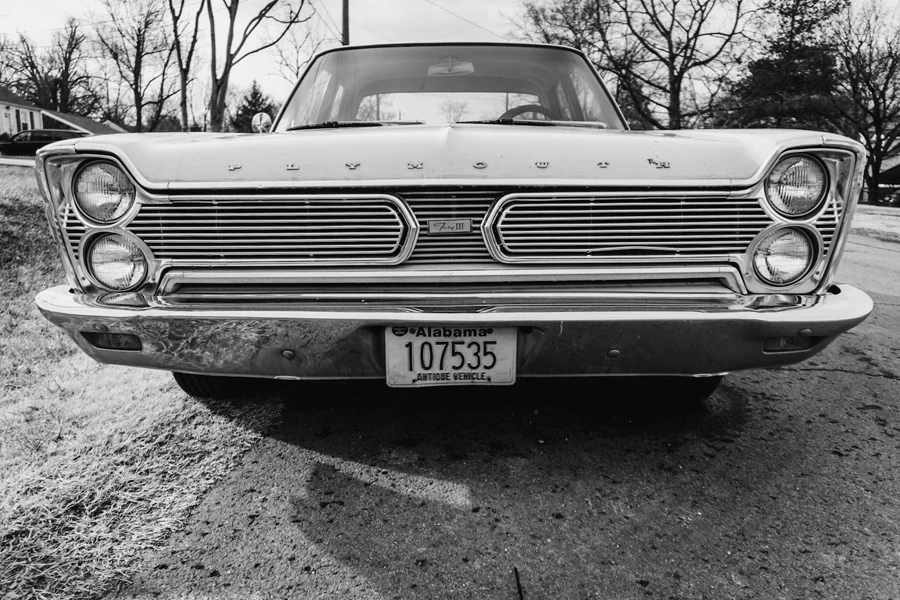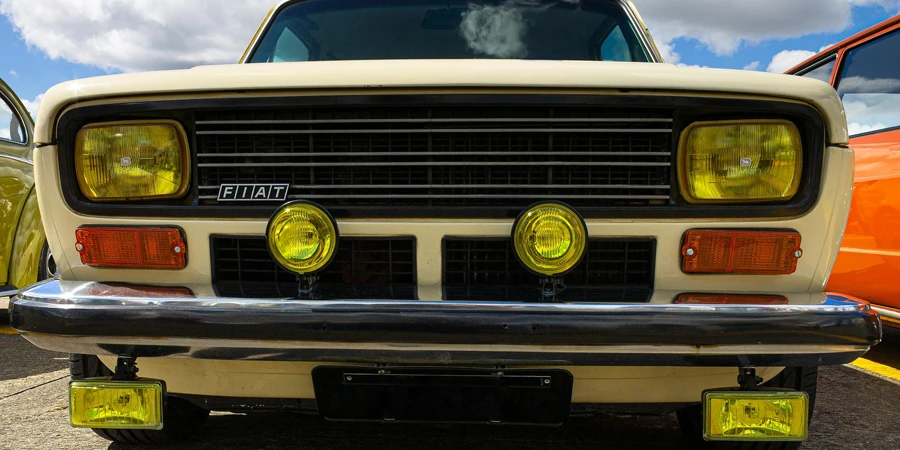Table of Contents
● Introduction
● Market overview
● Different types and their features
● Things to consider when selecting products
● Conclusion

Introduction
Car grilles are not just decorative elements but are integral to both the aesthetic appeal and the functional efficiency of vehicles. Positioned at the front, these grilles significantly influence a vehicle’s identity, often acting as a distinctive brand marker while simultaneously serving critical operational roles. They primarily enable effective air flow into the engine compartment, crucial for maintaining optimal engine temperatures and preventing overheating. With advancements in materials and design, such as the incorporation of active grille shutters in modern vehicles, grilles now also contribute to improved aerodynamics, which can enhance fuel efficiency and vehicle performance. As such, the selection of a car grille goes beyond mere visual appeal, requiring a thoughtful consideration of material durability, design compatibility, and the technological enhancements that align with the evolving automotive industry standards.
Market overview
The automotive grille market is witnessing robust growth, primarily propelled by the continuous evolution within the global automotive sector and an increasing penchant for vehicle customization. The market was evaluated at approximately USD 10.9 billion in 2023, with forecasts suggesting an escalation to USD 11.4 billion by 2024. By the end of the forecast period in 2032, it is projected to surge to around USD 16.2 billion, reflecting a compound annual growth rate (CAGR) of 4.48%, according to ReportLinker. This upward trend is bolstered by the surge in the adoption of online marketplaces that cater to aftermarket automotive components, significantly broadening consumer access and choice. Furthermore, the trend towards custom vehicle modifications continues to fuel market expansion, as more car owners seek not only to enhance their vehicle’s performance but also its aesthetic appeal through various grille designs.
Material innovations play a pivotal role in shaping the automotive grille market. ABS plastic holds a predominant share, contributing to approximately 60% of the market revenue in recent years, valued for its durability and cost-efficiency, according to ReportLinker. The market’s dynamics are also influenced by the integration of advanced technologies like active grille shutters, which optimize aerodynamics and engine cooling, showcasing a blend of functionality and design that appeals to modern consumers. Major market players are intensifying their innovation efforts, particularly in the OEM segment, which dominates the market. These manufacturers are not only focusing on the aesthetic aspects of grille design but are also enhancing the technical features to improve vehicle performance and fuel efficiency. As a result, the automotive grille market is not only a reflection of consumer preference for customization but also of the industry’s push towards more technologically sophisticated and environmentally sustainable vehicle solutions.

Different types and their features
Stainless steel or chrome mesh grilles
Stainless steel and chrome mesh grilles are renowned for their enduring aesthetics and robustness, making them a top choice for those seeking a blend of traditional appeal and long-term durability. These grilles are especially resistant to rust and environmental wear, which justifies their popularity among vehicle owners who prioritize both appearance and longevity. The reflective properties of chrome not only enhance the vehicle’s visual appeal but also contribute to its visibility, an aspect appreciated in various driving conditions. Additionally, the ease of maintenance associated with stainless steel and chrome mesh grilles ensures that they remain a practical option for many, as they can be kept in excellent condition with regular polishing and minimal cleaning effort. This makes them an ideal choice for both everyday vehicles and those that are more sporadically used, such as classic cars.
Aluminum grilles
Aluminum grilles offer a perfect balance between weight and functionality, providing robust protection against road debris while ensuring the grille does not add significant weight to the vehicle. This material is favored for its high strength-to-weight ratio, which is critical in applications where performance and agility are paramount. Despite its advantages, aluminum requires more maintenance than stainless steel or chrome, as it is prone to oxidation if not properly cared for. Regular polishing and protective coatings are recommended to maintain the aesthetic appeal and structural integrity of aluminum grilles. This material choice is particularly popular among performance vehicles and those in regions with harsh environmental conditions, where its properties can be fully utilized.

Plastic grilles
Plastic grilles are an increasingly popular choice due to their versatility and cost-effectiveness. Made primarily from materials such as ABS plastic, these grilles can be manufactured in a wide array of styles and colors, allowing for greater customization to match or enhance the vehicle’s existing aesthetics. The inherent flexibility and resilience of plastic make it capable of absorbing impacts without sustaining significant damage, thus providing effective protection against small road debris. Additionally, plastic grilles are resistant to corrosion, do not require frequent upkeep, and are generally more affordable than metal options, making them a practical choice for consumers seeking a balance between cost and functionality.
Active grille shutter
The active grille shutter is a revolutionary technology found in many modern high-end and electric vehicles. This system dynamically adjusts the grille openings based on the vehicle’s speed and cooling requirements, enhancing aerodynamic efficiency and reducing drag. This not only improves fuel efficiency but also aids in faster engine warm-up and maintains optimal operating temperatures. The integration of active grille shutters represents a significant advancement in automotive design, reflecting an industry-wide shift towards smarter, more energy-efficient components that can adapt to varying driving conditions without manual intervention.
Luminous grilles
Luminous grilles are at the cutting edge of grille design technology, incorporating materials like Polymethyl Methacrylate (PMMA) and Polycarbonate (PC) to create grilles that are not only visually striking but also functional. These materials allow for the incorporation of lighting elements that can change color, intensity, and patterns, offering customization options that were previously unattainable. This trend is driven by the increasing demand for personalization in the automotive industry, with drivers seeking to make their vehicles extensions of their personalities. Luminous grilles can transform the front of a car into a dynamic display, making a bold statement while also enhancing visibility in low-light conditions.

Things to consider when selecting products
Material durability and maintenance needs
Selecting the right materials for car grilles involves a delicate balance between aesthetic appeal and practical maintenance needs. Materials like stainless steel or chrome offer longevity and require minimal maintenance, retaining their luster with periodic polishing. Aluminum, while lightweight and robust, demands more frequent upkeep to prevent oxidation and maintain its appearance. Plastic grilles provide a cost-effective alternative, offering good durability against everyday road impacts and requiring less intensive care, suitable for those who prefer a low-maintenance option. According to American Modified, each material brings distinct advantages and challenges, emphasizing the importance of choosing based on both the vehicle’s operational conditions and the owner’s capacity for upkeep.
Compatibility with vehicle design
The integration of the grille into the vehicle’s overall design is crucial for aesthetic harmony and brand alignment. Grilles not only serve a functional purpose but also help define the vehicle’s identity. For instance, the iconic kidney grilles of BMW or the aggressive spindle grilles from Lexus make distinctive statements. The attention to design compatibility ensures that the grille enhances rather than detracts from the vehicle’s visual appeal.
Improvement in performance
Advanced grille technologies significantly impact vehicle performance by improving aerodynamics and engine cooling efficiencies. Active grille shutters, for example, adaptively manage airflow, which can reduce aerodynamic drag and enhance fuel efficiency. This technology allows for a smoother airflow over the vehicle’s body, reducing wind noise and increasing stability at high speeds. Additionally, improved grille designs contribute to better engine cooling, which is vital for maintaining optimal engine performance and longevity, particularly in high-performance and commercial vehicles.

Cost-effectiveness
Evaluating the cost-effectiveness of different grille materials involves considering the upfront costs versus long-term benefits such as durability and reduced maintenance. Plastic grilles, as American Modified suggests, offer an economical upfront cost with relatively low ongoing maintenance, making them ideal for budget-conscious consumers. In contrast, premium materials like stainless steel or billet aluminum may feature a higher initial cost but offer greater resilience and longevity, potentially reducing the frequency and costs of replacements. This balance of initial investment against long-term savings is crucial for making informed purchasing decisions in the automotive grille market.
Technological integration and customization
The integration of technology in grille design not only enhances vehicle functionality but also opens up new avenues for customization. Luminous grilles, utilizing materials like PMMA and PC, incorporate lighting technology that can be customized to change colors and patterns, adding a unique flair to the vehicle. This trend towards personalized vehicle aesthetics, as detailed by RPWORLD, caters to a growing segment of consumers looking to make their vehicles an extension of their personal style. Moreover, these technological advancements often come with easy-to-manage interfaces that allow owners to adjust settings as needed, merging functionality with personal expression.
Conclusion
Choosing the right car grille involves more than just selecting a component that meets the eye; it’s about finding the perfect blend of material, design, and functionality that aligns with both the vehicle’s performance needs and aesthetic preferences. The type of grille selected can significantly impact the vehicle’s aerodynamics, engine cooling capabilities, and overall durability. Whether opting for robust stainless steel, lightweight aluminum, versatile plastic, or technologically advanced options like active grille shutters and luminous grilles, each material and design offers unique benefits that can enhance vehicle efficiency and appeal.
It is essential for vehicle owners and designers to consider both aesthetic and functional aspects when selecting a grille. A well-chosen grille not only complements the vehicle’s design but also contributes to its operational efficiency, potentially improving fuel economy and engine performance. By carefully evaluating how different grilles align with their specific needs and preferences, consumers can ensure that their choice not only boosts the vehicle’s appearance but also its functionality, making the grille both a stylistic and practical enhancement.




